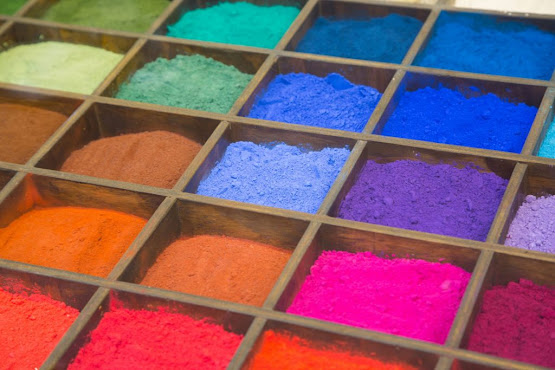Different materials are coloured using both pigments and dyes, but their methods are very, very different. Solubility, or the propensity to dissolve in a liquid, particularly water, is the key. Imagine two glasses of water, one with salt and the other with muck, standing next to each other.
Solubility
The murky water is brown and contains a variety of silt and mud particles suspended in it. If you give it enough time, the particles will eventually fall to the glass's bottom. The mixture is referred to as a suspension.
Grab some salt water now. The salt entirely dissolves in the water after being combined with it. To prevent evaporation and prevent a coating of salt from condensing on the bottom of the glass, cover the glass with a lid. A solution is a name given to this mixture.
Like the dirt in the previous illustration, pigments are tiny colour particles that float in liquids (usually not water, and are called the dispersing agent or vehicle). As opposed to dyes, which are substances that, like the salt in the previous example, dissolve in a medium (such as water) to produce a colourant.
Application
There are more distinctions between pigments and dyes. Both pigments and dyes have very different methods for actually adhering to the substance. While pigments are painted onto the surface, dyes are absorbed into the material and form a chemical bond.
To form a coating on top, the base is coated with the dispersion agent and pigment combination. In essence, the dispersion agent causes it to stick to the surface of the substance.
Instead of being painted on as a layer, dyes chemically attach to a material and really become a part of it. The chemical makeup of the material being dyed and the dye itself determine whether or not the dye will adhere. A mordant is a substance that is sometimes required for a dye to bond.
Additional
variations
Pigments are substantially lightfast than dyes in terms of reactivity to light. A dyed object loses its colour when exposed to light, especially sunshine since it causes the molecules' electrical bonds to rupture. As a result, dyed material frequently degrades when exposed to light and can occasionally fade quite quickly. (Although this is also true for some pigments; this is why art museums typically keep their lights low to preserve their paintings.)The majority of the time, dye buyers purchase their goods from shops that sell them or from dyes and pigments companies in India.
Uses
Dye is typically used in the paper and textile industries. Wood and leather are frequently coloured as well. The same goes for gasoline, lubricating oils, polishes, and waxes. Natural or synthetic dyes that have been deemed safe for human consumption are frequently used to colour food. Contrarily, pigments typically give rubber, plastic, and resin materials their colours.

No comments:
Post a Comment